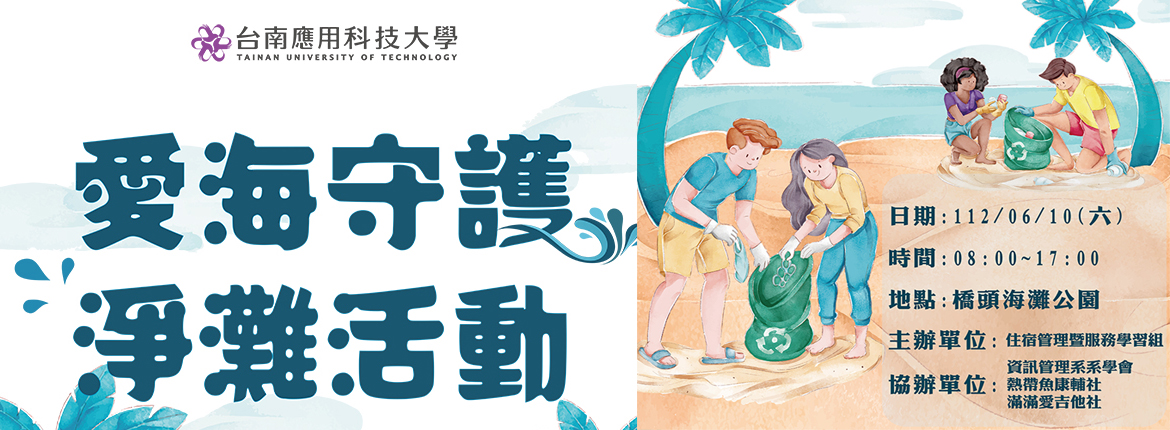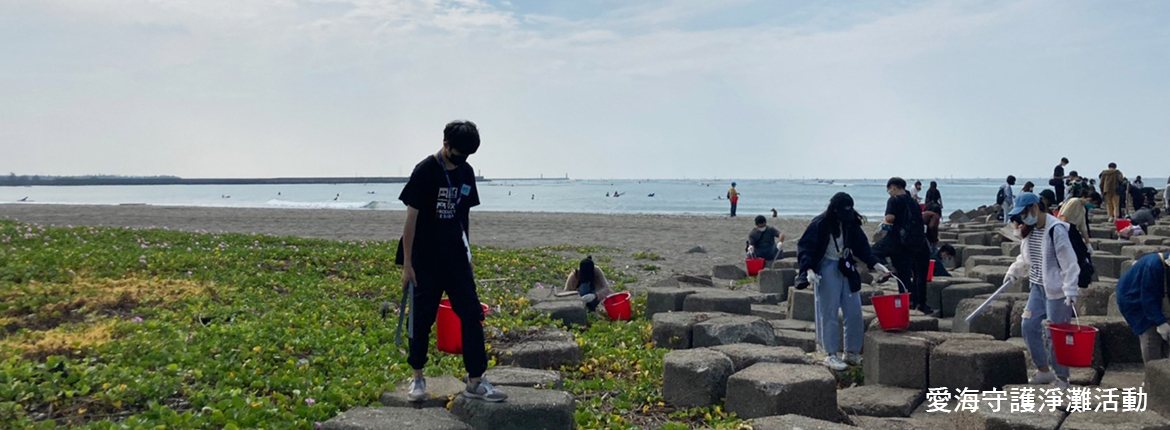Environmental Education Movie
| 1 | The Dangers of Laughing Gas - Expert Interviews 44:29 |
The Hazards of Laughing Gas - Expert Interviews | |
|
2 |
Discovery-"Taiwan Revealed: Green Savers" 43:32 | Taiwan, an island with a high population density, is constantly faced with the challenge of limited resources. Here, experts compete to utilize modern technology to solve people's most immediate problems. A team from the Industrial Technology Research Institute (ITRI) searches for battery storage technology that can bring new breakthroughs in renewable energy; a young materials expert develops safe building materials from discarded glass panels; and a pig farmer utilizes microalgae technology to purify agricultural waste and realize his dream of sustainable food production. | |
|
3 |
Discovery-"Taiwan's Unsurpassed Excellence: Agricultural Science and Technology" 43:31 | Three new agricultural technologies: How can drones become the eyes of agriculture? Exported to Malaysia to help local agriculture; No more wasted electricity ~ big data aquaculture, real-time monitoring how to help fishermen save electricity and sustainable fish farming; 3 hours of organic waste into organic fertilizers, no long-term stench, so that the earth is endless ~ "Taiwan's Unparalleled Excellence: Agricultural Science and Technology" to show you how Taiwan's agricultural technology, how to market the international market! | |
|
4 |
National Geographic Channel-[Wild Taiwan: Jungle Islands] Born in Taiwan, how many of the beautiful creatures in this movie have you seen? 44:08 | Taiwan is an island like no other. Nestled in the Tropic of Cancer, this little slice of Asia is home to tropical beaches, misty forests and icebergs. Life here is secret and scarce, spread between the warm lowlands of the west and the soaring mountains of the east. Throughout the island, exotic creatures revel in the return of spring, a spectacle not seen anywhere else in Asia. | |
|
5 |
National Geographic Channel - [Man vs. Nature: Grasslands] 44:06 | How do we strike a balance with nature, when even the "wild" has traces of human activity? From the plains of Africa to the Arctic, from Russia to the United States, this episode explores the wild grasslands - home to the largest concentration of animal life on Earth and one of the most endangered places on the planet. | |
|
6 |
Orphans of the Earth: The Spirits of Taiwan Taiwan's Grasshopper: Taiwan's Rarest and Most Endangered Spirit 49:00 | The series "Taiwan's Elves" takes part in the most difficult animal rescue missions and the most authoritative scientific investigation programs in Taiwan's conservation industry, and presents the most diverse landscapes and endemic organisms in Taiwan, documenting the conservation and recovery of Taiwan's endemic species on land, at sea, and in the air, from different perspectives, ranging from aerial rescue, marine investigation, to digging for bones in the ground. The most mysterious terrestrial owls live in the badlands of southwestern Taiwan, and scientists have not yet been able to decipher their whereabouts and behavior. After two years of intensive tracking and filming, the production team has broken through all the difficulties to fully document the rescue of the grasshopper by bird nets, tracking research, nighttime investigation, and the change and destruction of its habitat, bringing viewers into the most thrilling life journey of Taiwan's elves. | |
|
7 |
Orphans of the Earth: The Spirits of Taiwan" Taiwan White Dolphins: The Fifty Remaining Marine Spirits of the Earth 49:25 | The "Spirits of Taiwan" series takes part in the most difficult animal rescue missions and the most authoritative scientific investigation programs in Taiwan's conservation industry, and presents the most diverse landscapes and endemic organisms in Taiwan. From different perspectives and viewpoints, the program records the conservation and restoration of Taiwan's endemic species on land, at sea, and in the air, from aerial rescue, marine investigation, and underground bone digging. The program team participated in the Marine Department's white dolphin marine population survey program, filming the extremely rare white dolphin population and exploring the main cause of the disappearance of marine elves. In addition, the program documented the 56-day, 2,000-personnel rescue of the small killer whale, the largest rescue operation in history, and accompanied the research team to Orchid Island to excavate the bones of sperm whale hatchlings buried deep in the ground. The program also documented the stranding tragedy of melon-headed whales and blue whales. Through the life and death of many cetaceans and dolphins, the program brought viewers to see the current situation and problems of the deteriorating marine environment. | |
| 8 | Orphan of the Earth ~ Land of the Bears, Countdown to Polar Bear End-of-Century Extinction 49:08 | There are no polar bears in the Arctic? This is not a hypothetical question, but an ecological change that is taking place on the planet. The program flies to Canada, the largest polar bear country on earth, to be at the forefront of global warming and melting sea ice. In the ice-free waters of the Arctic Ocean, the land's largest carnivore endures hunger and is forced to eat grasses and kelp to survive. Male bears are getting smaller, cubs have a survival rate of less than 20%, and bear-eating behavior is on the rise. The world's only polar bear prison has already housed thousands of bears. The collapse of the polar environment will have a global impact, including Taiwan. | |
|
9 |
Guardians of Formosa: Ocean《Focus on the World》No.49 |Shu Menglan 53:39 | Do you see the beauty of Taiwan, but do you feel her sadness? Formosa, a beautiful island, is our home. But it is facing an unprecedented test... "The Guardians of Formosa" is a two-year project by the three-time TV Golden Bell Award-winning "Focus on the World" team, which took more than 500 days to film, using Taiwan's mountains, forests, and oceans as the setting for an in-depth exploration of the traumatic damage to Taiwan's ecosystem and precious species due to climate change and over-exploitation by mankind. | |
|
10 |
Focus on the World The Vanishing King - Trilogy: Man of the Forest 51:45 | Will the "Forest People", a close relative of human beings, become extinct on earth? Host Mona Shu goes deep into the earth's oldest rainforest! Discover the critically endangered orangutan! Trilogy: Man of the Forest" describes how orangutans, which are genetically only 3% different from humans on Earth, and are extremely close to each other, may be on the verge of extinction! The reason is human exploitation and abduction! The Focus on the World team traveled to one of the oldest places on Earth. The 130-million-year-old Borneo rainforest is the oldest rainforest on Earth. The team tracked and filmed the endangered wild orangutans, and found that the rainforest habitat has been drastically reduced, and also discovered that Taiwan and the orangutans are more closely related than ever imagined... The Vanishing King is the newest documentary series to be launched by ETTV in 2020, and is produced by Focus on the World, a two-time Golden Bell Award-winning TV program team. With three years of planning and two years of filming, the series uses the earth's rich ecosystems as its backdrop to document the most precious and endangered species on the planet that are about to disappear, and explores the consequences that mankind will have to bear when these species, which are critical to the health of the ecosystem, are on the verge of extinction due to the worsening climate change and human activities. | |
|
11 |
Vanishing Borders] The Old Clothes Crisis 47:32 | Misery! Ship shipments encountered the epidemic and prices continue to rise, the industry can not afford to recycle clothes into a mountain of slow-moving sales to save second-hand clothing industry We've all thrown clothes into the recycling bins, but you don't always know where the used clothes you've thrown away go. Instead of donating them directly, these full loads of used clothes are screened and sent to recycling factories for stockpiling. In the past, they used to be sent to Africa and Southeast Asia, but now they are all canceled due to the epidemic. So what to do with the clothes became a big problem. But this start-up company uses ingenuity to make fibers from old clothes. The start-up company used the fibers of old clothes to make wood, and it was determined that the recycled clothes were "tough". Turning old clothes into building materials opens up a new path to environmental sustainability. |
|
|
12 |
Food Waste Recycling] Where does food waste go? |Reducing the burden on incinerators (Our Island Episode 1081 2020-11-16) 29:19 | In the past, the black pig was the main solution to the food waste problem, but in 2019, the outbreak of the African swine plague, based on epidemic prevention considerations, some counties and municipalities banned food waste pig farming, some pig farms are unable to obtain food waste reuse verification, can only be withdrawn from the farm or switch to feed. Pig farmers used to scramble for food waste, but now they not only don't have a market, but also have to ask people to carry it, and counties and municipalities are trying to find a way out for the food waste. After Yunlin County announced a ban on food waste pig farming in 2019, the Kouhu Township cleaning team learned to raise gadflies to solve the food waste problem. Each gram of gadfly can digest 29 kilograms of food waste in its entire life cycle, from egg to adult. In 2017, the Taichung City Government signed a contract with the industry in the form of an ROT to convert an old composting plant into a biomass energy plant. Food waste from Taichung City is pulped after entering the plant and then transported by pipeline into the anaerobic fermentation system, where methane and carbon dioxide are produced through the digestion of methane bacteria. The methane gas is then processed with activated carbon and fed into the power generation system, which provides 600KW generators for power generation. Hsinchu City has set up the first rapid food waste treatment plant in Taiwan. While traditional composting facilities require at least three months for food waste to fully decompose, the high-efficiency treatment plant requires only 24 hours. The treatment capacity of this plant is 12 tons per day, and it can handle both raw and cooked food waste. | |
|
13 |
[Water Scarcity and Drought] Technology Creates Water, Quenches Corporate Thirst (Our Island Episode 1102 2021-04-26) 21:45 | In 2020, there was no typhoon, and the reservoirs didn't take in any money. In April, when the spring flowers bloomed, the water situation in the central and southern regions was critical, and the amount of water stored was at a record low. In order to mitigate the impact of the drought on water consumption, enterprises across Taiwan have been on the alert. China Steel, which uses about 45 million tons of water annually, has started to use reclaimed water at its plant in Kaohsiung's coastal industrial area. In addition to the iron and steel industry, semiconductor and optoelectronics are also high water-consuming industries. According to the Taiwan Water Supply Corporation (TWSC), TSMC, with an annual water consumption of 58 million tons, is ranked No. 1, and UMC and Chun Chong are among the top 10 water users, and the factories of these three companies in Nanking will also use reclaimed water. Let's see how wastewater enters the recycled water system and becomes reclaimed water in line with industrial processes. | |
|
14 |
Trash Crisis] Cape Landfill|Collapsing Coastal Landfill (Our Island Episode 1097 2021-03-22) 26:55 |
Before the 1990s, Taiwan's garbage was sent to suburban landfills to be buried. Since many of these sites are located on riverbanks or waterfronts, these landfills, whether they are still in service or closed and out of use, are still polluting our oceans due to erosion of the coasts and erosion of the sea water, resulting in the garbage collapsing into the sea. .... Although more than 90% of Taiwan's household garbage is now incinerated, except for the incineration plants in the two cities of Beigao, the rest of the counties and municipalities are facing the problem of not being able to burn all of their garbage. Some counties and cities pack up the garbage that cannot be incinerated and send it to the coastal landfill for temporary disposal. However, under the wind and rain, the outer plastic sheeting of the packaged garbage has long been torn and tattered, so the garbage escapes and pollutes the coast. In view of the worsening problem of the landfill sites, the EPD has allocated $45 million annually from 2020 onwards to strengthen the slope protection works at the landfill sites, but can such protection withstand the ever-growing amount of garbage and resist coastal erosion? Let's take a look at the current situation of coastal landfills around the world and explore the problem of garbage we are facing. |
|
|
15 |
Beautiful Bay Development] The beautiful future of Sugawara Bay|Whether to demolish or not to demolish (Our Island Episode 1083 2020-11-30) 27:45 |
Taitung's Sugiyuan Bay has been a public bathing area since 1987, and in 2005, the Mei Mei Bay Resort was constructed. At the beginning of the construction, the local residents held both positive and negative views, and after the industry circumvented the EIA to start the construction, the case was even challenged by environmental groups, and the protests have never subsided. The development of the Miramar Resort and Spa has been in dispute for 15 years, and it has not been able to operate since then. In October of this year, the arbitration result of the arbitration tribunal came out, Taitung County Government should pay $629 million to buy back the building. But the $629 million to buy back the Bellevue Resort is not just Taitung County's $629 million, it's the entire population's $629 million, so is this price reasonable? There is also this mosquito tourist resort in the first row of the sea view, should it be completely demolished in the future, restored to its original state, or converted into other functional venues and spaces? |
|
|
16 |
[Algae Reef vs. Natural Gas] Algae Reef Armageddon|Ecology and Energy Attack and Defense (Our Island Episode 975 2018-10-08) 23:56 |
What will be the answer to this battle between ecology and energy in the review of the EIA meeting for the construction of the PetroChina Third Natural Gas Receiving Terminal? Let's explore the ecological mysteries of Taoyuan's algal reefs and why we need to build the third natural gas receiving terminal. And why do we need to build the third natural gas receiving terminal? |







